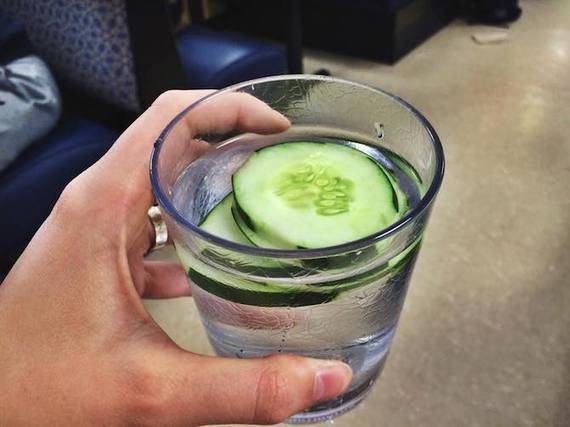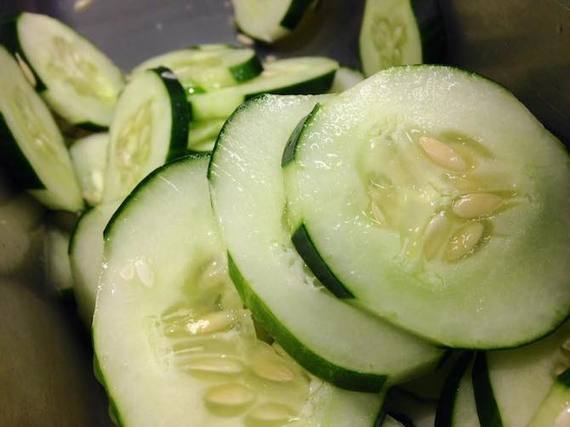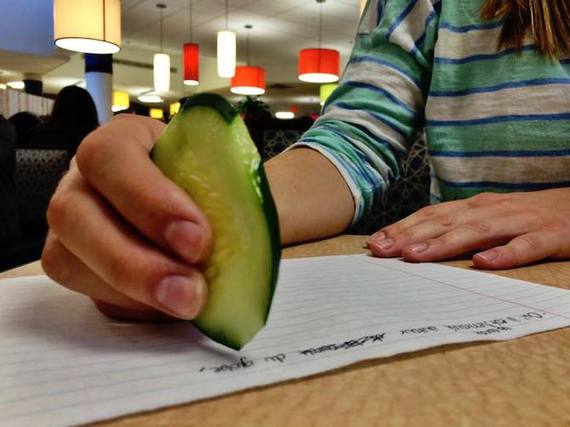
A new species of carnivorous sundew, Drosera magnifica, which scientists discovered while surfing Facebook.
Photo by Fernando Rivadavia
“It was just another normal day on Facebook,” claims Paulo Gonella, a
PhD student at the Universidade de São Paulo in Brazil. “I was
scrolling down my newsfeed when I came across a post by a friend. He was
sharing a photo originally posted by Reginaldo Vasconcelos, a plant
enthusiast from Governador Valadares, showing some plants in their
natural habitat.” But as Paulo looked at the low-resolution image, some
of the plants jumped out at him. They looked like sundews — in the genus
Drosera — but unlike any of the thirty species that are found in Brazil.
“The plants in the photo looked much larger and had very distinctive
leaf and flower characteristics when compared to all the other
Drosera
I know,” Paulo recalls. “I immediately showed this photo to Fernando
Rivadavia, who also studies this group of plants, and he was astonished
as well.”
Though they weren’t sure, Paulo and Fernando had just done something
no one else had ever done: discovered a new species of plant on
Facebook.

A leaf of
Drosera capensis
curls to encircle its insect victim trapped by the glue-like droplets
of mucilage visible on the tips of each stalk protruding from the leaf.
The genus
Drosera is the largest carnivorous plant genus on
Earth, boasting about 250 species. These vicious flora, commonly
referred to as sundews, can be found on every continent except
Antarctica, often growing in places where other plants struggle due to
their meaty diet. While most plants obtain all the minerals they need
from the soil they grow in,
Drosera species supplement what
they pull from the ground with tasty insects which they catch using a
thick, gluey substance produced by special stalks on their leaves.
Recently, plant scientists have been reviewing and revising this
genus. In Brazil, there are only 14 species listed on the online
database “Lista da Flora do Brasil”, but scientists have described about
30 species from the country. Of course, Reginaldo Vasconcelos wasn’t
thinking about sundew taxonomy when he made this Facebook post:

His photos, including the unnamed
Drosera, were shared by a few
of his friends, one of whom was also friends with Paulo. Paulo then
showed the picture to Fernando, and the pair contacted Reginaldo to ask
more about the plant. Reginaldo was able to provide more pictures and
where he shot them, and helped the pair get in touch with locals who
guided them to the summit of the mountain he had been exploring, Pico do
Padre Ângelo. Less than three months after they first saw the picture
on Facebook, Paulo and Fernando were on their way to see what they
suspected was a new species with their own eyes. Getting to it, however,
would prove more difficult than they anticipated.
“It was mid rainy season and the dirt roads leading to the region
were especially slippery. We finally had to give up driving to the
mountain when we reached a steep slope and instead of going uphill, our
car was going downhill!” Paulo explains. “We walked the rest of the way
under rain and over a muddy road to finally reach the mountain base.
From this point, it took 4 hours to reach the top, so we arrived there
quite late. We quickly collected all information we needed, made
observations, collected the specimens for herbarium specimens and took
some photos, as we needed to return before sunset.”
Finding the plant was key, because although the photo suggested a new
species, without actual specimens and a detailed description, no one
could be sure. “We also needed to confirm other important data about the
species, such as population size and potential threats to its habitat
to evaluate the conservation status,” says Paulo.
Several features set the new plant —
Drosera magnifica
— apart from its closest relatives. It has a higher number of leaves per
rosette, for example, and they’re a little broader. The team decided
upon the species name ‘magnifica’ because of the plant’s “magnificent
appearance.” It’s the largest sundew in the New World, and until its
description
was published July 24, 2015 in Phytotaxa, it was completely unknown to science.

Map of D. magnifica distribution in Brazil.
Figure 1 from Gonella et al. 2015
The team searched the mountain, but they only found a few populations of
D. magnifica.
Most of the plants were at a single site on the south slope of the
summit of Pico do Padre Ângelo between 1500 and 1530 m in elevation. As
far as habitats go, it’s not the most plant friendly; Paulo and Fernando
found these robust sundews in loose, sandy soil or even growing out of
cracks in the mountain’s sandstone surface. The site is wetter than most
around because of the shape of the mountain and wind patterns, which
might be why
D. magnifica does so well there. Two nearby
mountaintops were searched a few months later, but they were drier and
barren of the new species. So
D. magnifica is considered a microendemic and critically endangered due to the potential for extinction from habitat loss.
This magnificent plant is the first new species of plant discovered
on Facebook, following on the heels of a new species of lacewing that
was described after a photo of it was
posted to the picture sharing site Flickr.
Social media platforms are often maligned, thought of as frivolous
networks that cater to narcissists and teenagers (but I repeat myself).
Paulo, however, is one of a growing number of scientists who sees these
sites a little differently.
“As a botanist, I see Facebook as an important tool,” says Paulo. “It
allows me to be in touch with not only other fellow botanists, but also
plant enthusiasts from all over the globe. I participate in a few plant
identification groups, where people post photos of the plants they see
in nature, and from these photographs, it is not rare for specialists to
discover new regional records, new populations of rare plants and, now,
new species.”
Citation: Gonella, P. M., Rivadavia, F., & Fleischmann, A.
(2015). Drosera magnifica (Droseraceae): the largest New World sundew,
discovered on Facebook. Phytotaxa, 220(3), 257-267. DOI:
10.11646/phytotaxa.220.3.4















